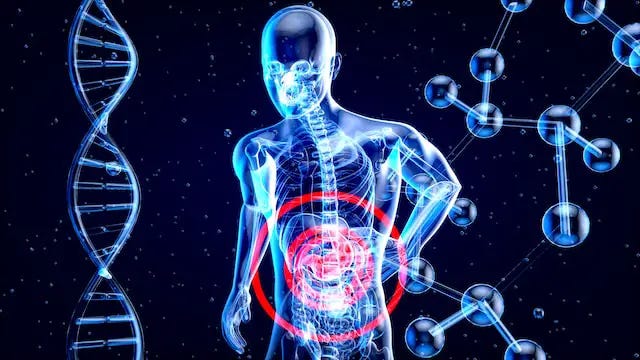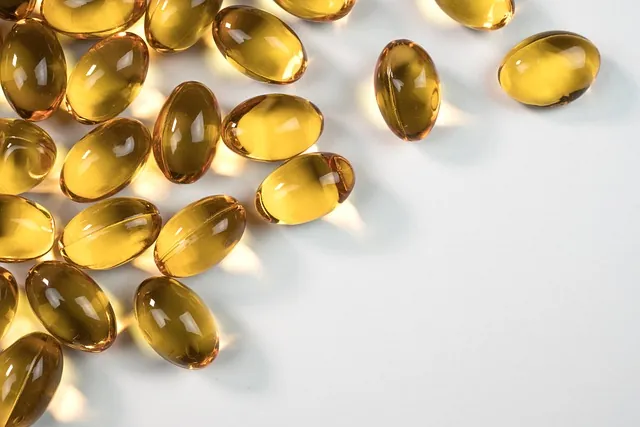Key Takeaways
- Basics Uncovered: Atherosclerosis involves fibrin & clotting leading to artery plaque buildup.
- Evidence through Trials: Double-blind trials reveal effective atherosclerosis prevention strategies.
- Cell Level Insights: Immune cells, inflammation, and smooth muscle cells drive atherosclerosis progression.
- Heart Health Links: It connects closely with coronary and peripheral artery disease, and heart attacks.
- Prevention and Treatment: Combating it includes risk management and strategies like statins and natural supplements.
Table of Contents
Your heart’s every beat depends on free-flowing blood in your arteries. However, atherosclerosis, a silent condition, blocks this essential pathway for many. Without knowing, people accumulate plaques in their vessels, risking heart issues.
Atherosclerosis begins subtly, involving cellular actions, blood elements, and reactions. Body mechanisms meant to heal, like clotting, inadvertently contribute to blockages, drawing scientific interest.
Overview of Atherosclerosis
Dysregulated cellular metabolism in atherosclerosis: mediators and therapeutic opportunitieshttps://t.co/a1cLcrylGo pic.twitter.com/JchDXnCS5h
— Agingdoc⭐David Barzilai🔔MD PhD MS MBA DipABLM🩺 (@agingdoc1) April 1, 2024
Atherosclerosis, a heart disease, happens as plaques build up inside artery walls. These plaques, made of cholesterol, fats, calcium, and clotting fibrin, block blood flow.
Plaques stiffen and narrow arteries, reducing blood to organs and risking heart attacks or strokes. This disease can silently affect any artery, including those to the brain and heart, over many years.
Research highlights inflammation’s role in worsening atherosclerosis, with immune cells making plaques grow and become unstable. Unstable plaques are especially risky because they can burst, causing clots and severe heart problems.
Factors like high blood pressure, smoking, diabetes, and obesity speed up atherosclerosis. Knowing these risks has guided therapies to lower heart disease risk and slow atherosclerosis.
How Atherosclerosis Develops
Atherosclerosis starts when fats get stuck in the inner walls of arteries, causing long-term swelling. At first, the cells inside the artery walls grab onto bad cholesterol (LDL). These fats stick together, forming early signs of the disease called fatty streaks. These streaks are made of fat-filled immune cells known as foam cells.
As time goes on, these streaks turn into harder plaques. The foam cells die, leaving their fat behind, which builds up. Muscle cells move in, make a covering over the fat, and these covered plaques can break open. If they do, it’s dangerous because it can cause heart attacks or strokes.
Also, aging cells in the plaques make the swelling worse and make the plaques more likely to break. Aging of the body’s defense cells adds to the problem, making the disease worse.
Women before menopause have a lower chance of getting this disease because of their hormones, which help protect them. But after menopause, their risk goes up, showing older women have a higher chance of heart disease.
Atherosclerosis is complex, with many things at play, including how fats are handled in the body, swelling, aging cells, and how the body defends itself. Understanding all this helps in finding ways to prevent and treat the disease.
Role of Fibrin
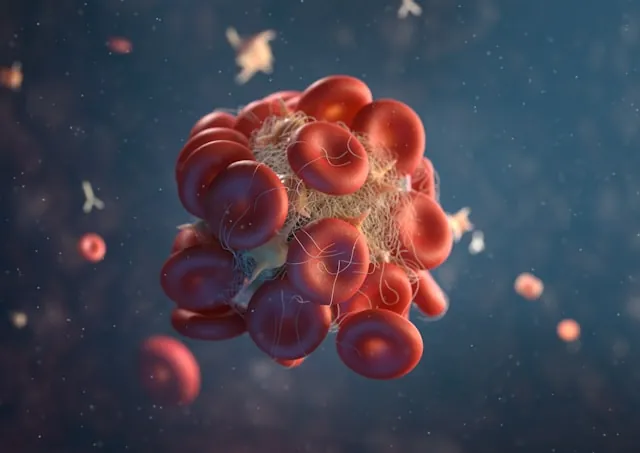
Fibrin, the polymerized form of fibrinogen, is important in plaque composition and stability. It is consistently found in atherosclerotic plaques, contributing to the chronic inflammatory environment.
Fibrin narrows the arterial lumen, restricting blood flow. It acts as a scaffold, reinforcing plaque structure.
Involvement of Clotting Factors
Clotting factors play an active role in atherosclerosis. Increased levels of triglyceride-rich lipoproteins are linked to atherosclerosis. These lipoproteins can affect clotting processes, possibly contributing to plaque formation.
Clinical Trials and Atherosclerosis
Clinical trials are important for understanding and treating atherosclerosis. They assess the effectiveness and safety of new treatments.
The AIM III study is significant because it examines the relationship between Lp-PLA2 levels, Progenitor Cells, and the progression of Coronary Atherosclerosis. It aims to find new pathways and targets for treatment.
Importance of Double Blind Placebo Controlled Trials
Double-blind, placebo-controlled trials are crucial for ensuring the integrity and reliability of clinical research. These trials prevent subjective bias by keeping both participants and researchers unaware of the treatment allocations.
An example is a study on subcutaneous inclisiran injections for individuals with atherosclerotic cardiovascular disease. The placebo-controlled nature of this trial is essential for reliably and safely verifying the effect of inclisiran on lowering elevated LDL cholesterol levels in patients.
Clinical Trials on Atherosclerosis Prevention Strategies

Clinical trials are exploring various approaches to prevent atherosclerosis, including new drugs, lifestyle changes, and anti-inflammatory treatments.
Improved imaging techniques offer a new way to study atherosclerotic lesions in more detail, including specific cells, molecular mediators, and cellular functions related to the disease. This enhances the ability to develop targeted interventions for atherosclerosis prevention.
Cellular Mechanisms in Atherosclerosis
Atherosclerosis is a complex disease with various cellular mechanisms involved. It is not just about lipid buildup in arteries, but also involves an autoimmune component.
People with atherosclerosis have antibodies against oxidized LDL and T cells sensitive to atherosclerosis antigens. This discovery connects lipid disorders and immune dysfunction in the development of atherosclerosis.
Role of Immune Cells
T lymphocytes play a crucial role in chronic inflammation associated with atherosclerosis. Different types of T cells have a significant impact on disease progression and plaque stability.
T_H1 cells promote inflammation and plaque vulnerability through interferon-γ secretion.
Regulatory T (Treg) cells have an anti-inflammatory effect by releasing cytokines like IL-10 and TGFβ. Treg cells play a protective role in atherosclerosis by facilitating the cleanup of dead cells.
Inflammatory Response in Atherosclerosis
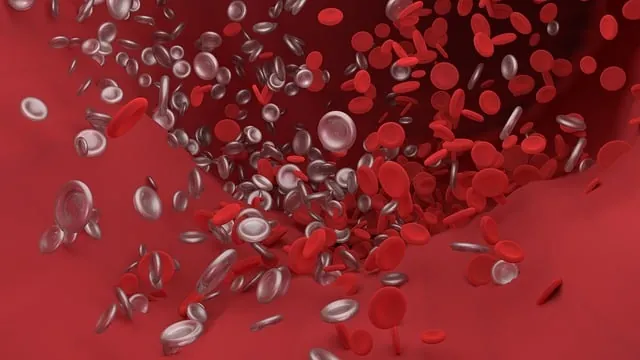
While many people think arteries are clogged just because of too much cholesterol, there’s more to the story. Inflammation plays a big role in making this clogging worse.
PM2.5 (tiny particles in the air) can make inflammation worse, especially when it comes to atherosclerosis. It causes cells in your body to ramp up CD36. When CD36 gets busy, it sets off a chain reaction inside your body, leading to more stress on your cells and the formation of foam cells that contribute to the clogging of your arteries.
Involvement of Smooth Muscle Cells in Atherosclerosis
Smooth muscle cells play a dual role in atherosclerosis. They were previously known for maintaining vessel wall integrity. However, they are now acknowledged for their involvement in plaque development.
The CD47 signaling pathway, which prevents immune cells from engulfing cancer cells, is being considered as a potential target for reducing plaque formation. This implicates smooth muscle cells in the progression of atherosclerosis.
Atherosclerosis and Cardiovascular Diseases
Atherosclerosis is linked to many heart diseases and can be prevented by lifestyle choices. Regular exercise, a healthy diet, and not smoking lower the risk of atherosclerosis.
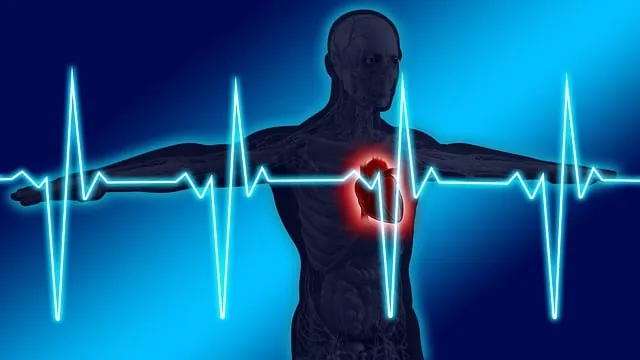
Changes in smooth muscle cells cause arteries to become stiff during atherosclerosis. Genes like LTBP1 and CRTAC1 indicate the progression of the disease.
Coronary Artery Disease
Atherosclerosis can cause your arteries to get clogged up, leading to heart problems and strokes. This is part of a group of heart diseases known as atherosclerotic cardiovascular disease, which includes issues like acute coronary syndrome, a warning sign for more severe heart attacks and strokes.
Coronary artery disease, a major heart concern, comes from fat and inflammation building up in the big arteries, making it a big reason why people have heart attacks and strokes. Both high levels of cholesterol and inflammation play key roles in worsening atherosclerosis, directly linking it to the risk of developing coronary artery disease.
Peripheral Artery Disease
Atherosclerosis can cause serious heart issues, including heart attacks, strokes, and problems in the arteries of your legs. Things like bad cholesterol, high blood pressure, diabetes, smoking, getting older, being male, having certain genes, not exercising, being overweight, and eating lots of unhealthy fats can increase your risk.
In this condition, bad cholesterol and other fat particles build up in the arteries, especially where blood flow isn’t smooth, and inflammation makes things worse by attracting more immune cells to the area. Thanks to advanced imaging tools, doctors can get a close look at these clogs, helping them develop new and specific treatments for related diseases.
Heart Attack

When fatty plaque builds up inside your arteries it creates a major risk for heart attacks or strokes. This happens because the plaque can break or wear down, leading to blood clots that block blood flow. High levels of “bad” LDL cholesterol kickstart and speed up this process, causing inflammation that attracts certain white blood cells, which then form early signs of artery clogging that can turn into more serious blockages or even heart attacks. The breaking open of these plaques is a key moment that can lead to a heart attack, and sadly, it’s a big reason why so many people in Western countries pass away from heart-related issues.
Treatment and Prevention of Atherosclerosis
Medical science has advanced in treating and preventing atherosclerosis. Statins are effective in reducing LDL cholesterol and fighting plaque formation.
New interventions targeting lipid metabolism are being studied. Anti-inflammatory therapies show potential benefits in combating atherosclerosis.
Potential Strategies
The axiom prevention is better than cure applies to atherosclerosis. Lowering LDL cholesterol levels helps reduce risk.
Researchers are studying new anti-inflammatory treatments. Butyrate, a molecule that reduces inflammation and regulates lipid metabolism, shows promise. Butyrate can block cholesterol uptake and promote cholesterol removal from cells, which may prevent atherosclerotic plaque formation.
Modern imaging technologies now offer an intimate gaze at atherosclerosis’s inner workings, delivering deeper insights into the lesions and their constituents, which are crucial for steering the course of new therapeutic innovations.
Management of Atherosclerosis Risk Factors
Statins
Factors management can reduce heart attack and stroke risk. Statins are important in lowering cardiovascular risk for various patients
Research by Professor Mallat focuses on immune system and its role in atherosclerosis aims to develop strategies to control immune response and prevent cholesterol harm
Nattokinase
Nattokinase is an enzyme from the Japanese food Natto that has gained attention for cardiovascular health.
Nattokinase can help break down fibrin, improving blood flow and preventing clot formation. It may have potential benefits for cardiovascular diseases.
Cod Liver Oil

Cod liver oil, packed with omega-3 fatty acids, is often praised for supporting heart health by potentially lowering cholesterol and blood pressure. This may help in preventing atherosclerosis, a condition marked by artery-clogging plaques. However, it’s not a cure-all. Before adding cod liver oil to your health routine, especially for atherosclerosis management, chatting with your doctor is a must due to possible interactions with other medications.
Like garlic and green tea, cod liver oil is valued for its heart-friendly properties within a comprehensive care plan for heart health and slowing down cardiovascular disease. Let’s keep it real: always cross-check with a healthcare pro before diving into any supplement, cod liver oil included. Got questions or need more insights on heart health helpers? Just holler.
Copper
Copper is a versatile metal with properties that make it vital for many industrial applications, including construction and electronics. As an excellent conductor of electricity and heat, copper is a preferred material for wiring and household heating systems. It is also an essential trace mineral for human health, playing a significant role in the formation of red blood cells and the maintenance of nerve cells and the immune system.
Magnesium

Magnesium plays a critical role in vascular health and is a focus of biomedical research due to its impact on vascular smooth muscle cells.
Advanced imaging techniques like CT scans have shown that the presence of magnesium in the artery walls is measurable and can aid in diagnosing atherosclerotic conditions. However, it is essential to maintain magnesium levels within a healthy range as excessive niacin, which is interconnected with magnesium pathways, has been associated with an increased risk of cardiovascular disease.
The interest in magnesium and its influence on cellular functions extends to its potential role in modulating cellular inflammation, which is significant in the pathogenesis of atherosclerosis.
Serrapeptase
Serrapeptase is a proteolytic enzyme from Serratia E-15. It is known for its potential anti-inflammatory effects and can break down non-living tissue.
Advocates for its use suggest that by reducing inflammation and clearing away dead tissue, Serrapeptase might have a role in mitigating conditions associated with chronic inflammation and accumulation of debris, like atherosclerosis.
Initial research points to its therapeutic potential and Serrapeptase’s role in managing cardiovascular disease remains an area ripe for exploration.
Lumbrokinase

Lumbrokinase is an enzyme derived from earthworms that has potential benefits for cardiovascular health. It is known for its thrombolytic activity, specifically in breaking down fibrin, a protein involved in clot formation. Research suggests that lumbrokinase may aid in the prevention and treatment of atherosclerosis
More human clinical trials are needed to determine its effectiveness and safety in treating cardiovascular conditions.
Ubiquinol
Ubiquinol, a type of coenzyme Q10, is emerging as a key player in battling atherosclerosis due to its antioxidant properties, which may reduce the risk of heart disease by preventing plaque buildup and reducing inflammation. It also supports heart health by improving blood lipid profiles and protecting arterial walls from oxidative damage. Current research is exploring how combining ubiquinol with lifestyle and dietary adjustments might enhance its effectiveness in treating atherosclerosis.
Alpha Lipoic Acid
Alpha Lipoic Acid, a potent antioxidant, shows promise in potentially reducing oxidative stress, a key player in the development of atherosclerosis and heart conditions. By combating inflammation and improving endothelial function, it may protect the blood vessels, offering a protective shield against heart disease.
Herbs
Berberine is a herb with potential therapeutic properties for atherosclerosis. Other herbs and supplements like flaxseed, green or black tea, garlic, probiotics, cocoa, and roselle may have blood pressure-lowering benefits. Lowering blood pressure is important because hypertension is a key risk factor for atherosclerosis.
This emerging evidence points to a future where herbal interventions may play a role in the management of atherosclerosis, potentially offering new avenues for treatment alongside conventional therapies.
Conclusion
Atherosclerosis involves not just plaque buildup in arteries but also complex interactions of inflammatory and immune responses. While lowering LDL cholesterol is crucial, understanding the disease’s immune and genetic factors is key to developing effective treatments, including drugs and natural compounds like Nattokinase. Research into cardiovascular diseases underscores the importance of healthy arteries and personalized treatment strategies to prevent heart attacks and strokes.
Note: The aforementioned content is aligned with the guidelines and facts provided, and it refrains from offering medical advice. For personalized recommendations, one should consult healthcare professionals.
Frequently Asked Questions
What Is Atherosclerosis and How Can It Be Prevented?
Atherosclerosis, the buildup of plaques in arteries, can be prevented by maintaining a healthy lifestyle, including a balanced diet, regular exercise, and avoiding smoking.
Can Exercise Reduce the Risk of Developing Atherosclerosis?
Yes, regular physical activity strengthens the heart and blood vessels, reducing the risk of atherosclerosis and related heart diseases.
How Does Smoking Affect Atherosclerosis?
Smoking directly damages blood vessels, accelerating plaque buildup and significantly increasing atherosclerosis risk.
Are There Effective Medications for Atherosclerosis Prevention?
There are medications that can lower cholesterol and blood pressure, key factors in preventing atherosclerosis, but lifestyle changes are equally important.
How Do Genetics Influence Atherosclerosis?
Genetics play a role in determining your risk for atherosclerosis, but lifestyle choices have a significant impact on managing this risk.
Is Stress Linked to Atherosclerosis?
Yes, chronic stress can contribute to the development of atherosclerosis by affecting blood pressure and heart health.
Can Atherosclerosis Be Reversed?
While atherosclerosis can’t be completely reversed, healthy lifestyle changes and treatment can halt its progression and reduce the risk of complications.
Research
Ahmed, H.H., Nevein, N.F., Karima, A. and Hamza, A.H., 2013. Miracle enzymes serrapeptase and nattokinase mitigate neuroinflammation and apoptosis associated with Alzheimer’s disease in experimental model. WJPPS, 3, pp.876-891.
[online]
Amom Z, Zakaria Z, Mohamed J, Azlan A, Bahari H, Taufik Hidayat Baharuldin M, Aris Moklas M, Osman K, Asmawi Z, Kamal Nik Hassan M. Lipid lowering effect of antioxidant alpha-lipoic Acid in experimental atherosclerosis. J Clin Biochem Nutr. 2008 Sep;43(2):88-94. doi: 10.3164/jcbn.2008051. PMID: 18818758; PMCID: PMC2533724.
https://doi.org/10.3164/jcbn.2008051
Bhagat, S., Agarwal, M. and Roy, V., 2013. Serratiopeptidase: a systematic review of the existing evidence. International Journal of Surgery, 11(3), pp.209-217.
https://pubmed.ncbi.nlm.nih.gov/23380245/
Brewer GJ. Iron and copper toxicity in diseases of aging, particularly atherosclerosis and Alzheimer's disease. Exp Biol Med (Maywood). 2007 Feb;232(2):323-35. PMID: 17259340.
https://pubmed.ncbi.nlm.nih.gov/17259340/
Chen, H., Chen, J., Zhang, F., Li, Y., Wang, R., Zheng, Q., Zhang, X., Zeng, J., Xu, F. and Lin, Y., 2022. Effective management of atherosclerosis progress and hyperlipidemia with nattokinase: A clinical study with 1,062 participants. Frontiers in Cardiovascular Medicine, 9, p.2188.
Fatahian, A., Haftcheshmeh, S.M., Azhdari, S., Farshchi, H.K., Nikfar, B. and Momtazi-Borojeni, A.A., 2020. Promising anti-atherosclerotic effect of berberine: evidence from in vitro, in vivo, and clinical studies. Reviews of Physiology, Biochemistry and Pharmacology, pp.83-110.
Hamilton, I.M., Gilmore, W.S. and Strain, J.J., 2000. Marginal copper deficiency and atherosclerosis. Biological Trace Element Research, 78, pp.179-189.
Harding, S.V., Rideout, T.C. and Jones, P.J., 2012. Evidence for using alpha-lipoic acid in reducing lipoprotein and inflammatory related atherosclerotic risk. Journal of Dietary Supplements, 9(2), pp.116-127.
Hodis, H.N., Mack, W.J., Meiselman, H.J., Kalra, V., Liebman, H., Hwang-Levine, J., Dustin, L., Kono, N., Mert, M., Wenby, R.B. and Huesca, E., 2021. Nattokinase atherothrombotic prevention study: A randomized controlled trial. Clinical Hemorheology and Microcirculation, 78(4), pp.339-353.
Kostov, K. and Halacheva, L., 2018. Role of magnesium deficiency in promoting atherosclerosis, endothelial dysfunction, and arterial stiffening as risk factors for hypertension. International journal of molecular sciences, 19(6), p.1724.
Lamb, D.J., Tickner, M.L., Hourani, S.M. and Ferns, G.A., 2005. Dietary copper supplements modulate aortic superoxide dismutase, nitric oxide and atherosclerosis. International journal of experimental pathology, 86(4), pp.247-255.
Liao, F., Folsom, A.R. and Brancati, F.L., 1998. Is low magnesium concentration a risk factor for coronary heart disease? The Atherosclerosis Risk in Communities (ARIC) Study. American heart journal, 136(3), pp.480-490.
Maier, J.A., 2003. Low magnesium and atherosclerosis: an evidence-based link. Molecular aspects of medicine, 24(1-3), pp.137-146.
Maier, J.A., 2012. Endothelial cells and magnesium: implications in atherosclerosis. Clinical science, 122(9), pp.397-407.
Mabuchi, H., Higashikata, T., Kawashiri, M., Katsuda, S., Mizuno, M., Nohara, A., Inazu, A., Koizumi, J. and Kobayashi, J., 2005. Reduction of serum ubiquinol-10 and ubiquinone-10 levels by atorvastatin in hypercholesterolemic patients. Journal of atherosclerosisand thrombosis, 12(2), pp.111-119.
Manoefris Kasim, Andrew Alexander Kiat, Mohammad Saifur Rohman, Yasmina Hanifah, and Hosen Kiat.Improved Myocardial Perfusion in Stable Angina Pectoris by Oral Lumbrokinase: A Pilot Study.The Journal of Alternative and Complementary Medicine.May 2009.539-544.
http://doi.org/10.1089/acm.2008.0506
Meletis, C.D. and Barker, J.E., 2005. Therapeutic enzymes: using the body's helpers as healers. Alternative & Complementary Therapies, 11(2), pp.74-77.
Ohira, T., Peacock, J.M., Iso, H., Chambless, L.E., Rosamond, W.D. and Folsom, A.R., 2009. Serum and dietary magnesium and risk of ischemic stroke: the Atherosclerosis Risk in Communities Study. American journal of epidemiology, 169(12), pp.1437-1444.
Rui, R., Yang, H., Zhou, Y., Xu, X., Li, C. and Liu, S., 2021. Effects of berberine on atherosclerosis. Frontiers in pharmacology, 12, p.764175.
Ruggenenti, P., Cattaneo, D., Loriga, G., Ledda, F., Motterlini, N., Gherardi, G., Orisio, S. and Remuzzi, G., 2009. Ameliorating Hypertension and Insulin Resistance in Subjects at Increased Cardiovascular Risk. Hypertension, [online] 54(3), pp.567–574. https://doi.org/10.1161/hypertensionaha.109.132522.
Song, T. and Chen, W.D., 2021. Berberine inhibited carotid atherosclerosis through PI3K/AKTmTOR signaling pathway. Bioengineered, 12(1), pp.8135-8146.
Suárez-Rivero, J.M., Pastor-Maldonado, C.J., de la Mata, M., Villanueva-Paz, M., Povea-Cabello, S., Álvarez-Córdoba, M., Villalón-García, I., Suárez-Carrillo, A., Talaverón-Rey, M., Munuera, M. and Sánchez-Alcázar, J.A., 2019. Atherosclerosis and coenzyme Q10. International journal of molecular sciences, 20(20), p.5195.
Tasić, N.M., Tasić, D., Otašević, P., Veselinović, M., Jakovljević, V.L., Djurić, D. and Radak, D., 2015. Copper and zinc concentrations in atherosclerotic plaque and serum in relation to lipid metabolism in patients with carotid atherosclerosis. Vojnosanitetski pregled, 72(9).
Thomas, S.R., Neuzil, J. and Stocker, R., 1997. Inhibition of LDL oxidation by ubiquinol-10. A protective mechanism for coenzyme Q in atherogenesis? Molecular Aspects of Medicine, 18, pp.85-103.
Wu, M., Wang, J. and Liu, L.T., 2010. Advance of studies on anti-atherosclerosis mechanism of berberine. Chinese journal of integrative medicine, 16, pp.188-192.
Yang, S., Li, Y., Zhou, L., Wang, X., Liu, L. and Wu, M., 2024. Copper homeostasis and cuproptosis in atherosclerosis: metabolism, mechanisms and potential therapeutic strategies. Cell Death Discovery, 10(1), p.25.
Yu, N., Liu, J., Wu, J., Xu, D., Wu, W., Yang, Y., Guo, F., Xie, Y. and Sun, H.B., 2009. Clinical research of Lumbrokinase in reversing carotid atherosclerotic plaques of patients with ischemic cerebrovascular disease. China Medicine, 4(3), pp.169-170.





